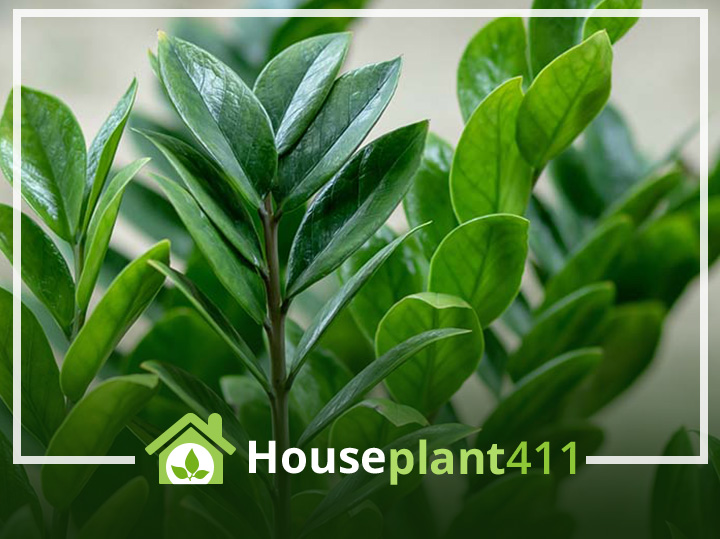ZZ plants are highly popular because they are fairly resilient and low maintenance. However, many plant owners fear buying these plants due to the myths surrounding their toxicity. Despite this, plant enthusiasts are learning more about the history of ZZ plants, including their origins and evolution.
Doing your plant research is very important to many plant enthusiasts since it helps them know everything they can about caring for different varieties.
Let’s explore everything you need to know about ZZ plant history.
Plant Owner Comments About ZZ Plants
Many plant owners report that ZZ plants are easy to grow and require little care and effort. If you visit online websites, you may even find comments that say this plant is boring. If you can grow it anywhere without doing much, it’s boring to have, right?
Most people get plants not just for their beauty but also for the challenge of looking after them. ZZ plants have a rich history and have evolved over the years to survive in their natural environment. Some people have even gone so far as to say that the ZZ plant thrives on neglect.
However, the ZZ plant is an interesting species to own in your home.
The History, Origins, and Evolution of ZZ Plants
These plants originated in some parts of Africa and belonged to the Arum family. Not all varieties and species of ZZ plants flower, which is often due to the growing conditions they are exposed to. However, these plants can produce brilliant white flowers, considered trophies by plant enthusiasts.
Due to its reproduction method, the ZZ plant grows beautifully and quickly in many regions. When the leaflets fall on the ground or soil, they can quickly form roots and propagate themselves.
You can expect these plants to grow in grasslands and near certain forests. ZZ plants grow rhizomes, which grow underground and store moisture. This characteristic has allowed the ZZ plant to survive in periods of drought, making it quite resilient. This may be perfect for novice plant owners since they can get away with forgetting to water their plants occasionally.
The ZZ plant adapted to the times and evolved to survive its natural conditions. Since all plants need water, the ZZ plant developed traits to live during droughts due to reliance on rhizomes. So, when you’re traveling, you don’t need to ask your neighbors to water your plants. For this reason, the ZZ plant is anything but boring if you understand its rich history, origins, and evolution.
It looks a bit like cycads, which have been known to exist even before dinosaurs. That is where it got its official name, which is Zamioculcas zamiifolia.
How to Optimally Care for a ZZ Plant?
Although the word on the street is that ZZ plants can survive with little to no care, they still need a loving touch. So, you must avoid overwatering them since that could lead to a condition called root rot. When the roots start rotting, your plant cannot draw nutrients from the soil through active transport. As such, your ZZ plant will die if you don’t use well-draining soil mixtures and add drainage holes to your pot.
However, the reverse is not as true. So, your ZZ plant can survive in dry soil even if you don’t water it for many days. Its evolutionary traits have enabled the ZZ plant to survive through reliance on its water-absorbing rhizomes. A good rule of thumb is to water your ZZ plant once every three weeks. This is unthinkable for many plants, so the ZZ plant is known as a survivor.
You can purchase small pots or containers for growing your ZZ plant indoors. You will get the best growth results by exposing these plants to indirect sunlight. Too much direct sunlight can cause the plant’s leaves to get scorched, which is something to avoid. However, since the ZZ plant originated in South Africa, it can survive high temperatures and a few hours of sunlight without any problems.
You can experiment with what works best for your ZZ plant by keeping it near the window in the morning and moving it to the shade in the afternoon. This ensures your plant gets enough sunlight for photosynthesis and grows optimally, especially in its earlier stages.
Final Verdict
ZZ plants are known to be resilient and are a popular choice in many homes. However, they have received a bad reputation due to the supposed effects of their toxicity on children and pets. Scientific evidence has proven this false since the toxicity levels are too low to cause significant issues.
Its history and evolution point to its adaptability to the environment. It can easily survive in areas of low water by relying on rhizomes that capture water and grow underground. Its resemblance to cycad has given it its scientific name, and the ZZ plant is fairly popular to grow at home.
Caring for the ZZ plant is simple and easy. Even if you are traveling for many days, you don’t need to ask your neighbors to water your plants since they are pretty low maintenance. Overall, ZZ plants have proved to be resilient and can survive and thrive in difficult conditions.
If you’re looking for the perfect plant for your home, you can choose the ZZ plant and see for yourself!

